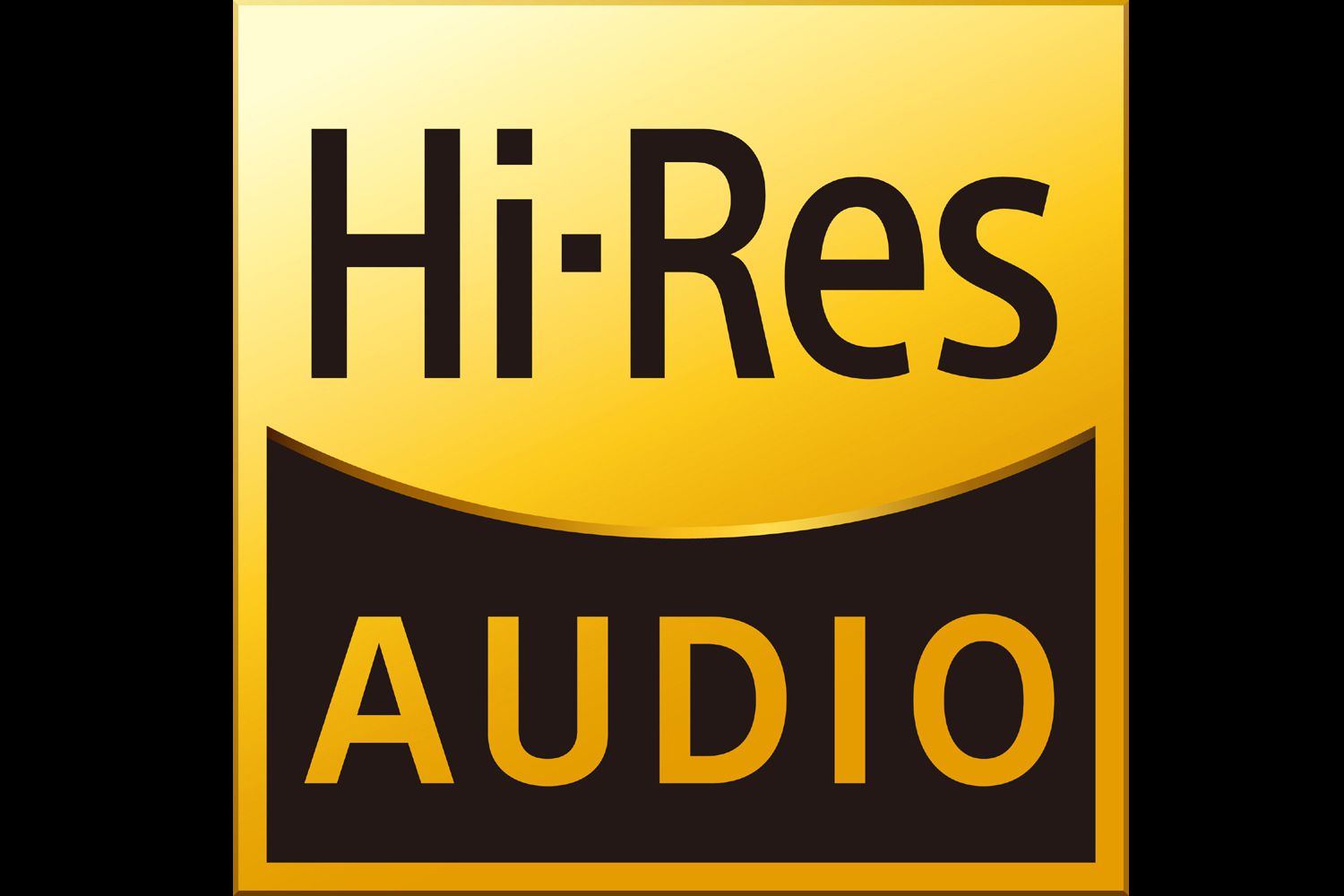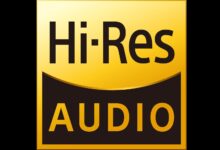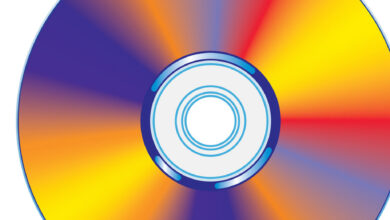What Is Certified Hi-Res Audio?

Introduction
Have you ever wondered what makes music sound more lifelike and immersive? The answer lies in the quality of the audio we listen to. In recent years, there has been a growing trend towards high-resolution audio, also known as Hi-Res audio. This article aims to provide a comprehensive understanding of what certified Hi-Res audio is, its benefits, and how you can experience it.
Understanding Audio Quality
Before delving into the realm of Hi-Res audio, it’s essential to understand the concept of audio quality. When we listen to music, we want it to be as faithful to the original recording as possible. However, standard audio formats like MP3 or AAC often compress the audio data, resulting in a loss of detail and nuances. This lossy compression sacrifices some audio fidelity to reduce file size, making it convenient for streaming and storage but compromising the listening experience.
What is Hi-Res Audio?
Hi-Res audio refers to audio recordings that retain more of the original information captured during the recording process. It offers a higher level of audio quality compared to standard audio formats. Hi-Res audio files typically have a greater bit depth and sample rate, allowing for more accurate representation of the original sound. This increased level of detail and clarity creates a more immersive and realistic listening experience.
Benefits of Hi-Res Audio
The benefits of Hi-Res audio are numerous. Firstly, it allows for a more nuanced and detailed representation of the music, capturing subtle elements such as instrument timbre, spatial cues, and dynamic range. This enhanced fidelity offers a more immersive experience, allowing listeners to hear the music as the artist intended.
Moreover, Hi-Res audio can reveal details that may not be audible in lower-quality formats, unveiling hidden layers and textures within the music. This level of fidelity is particularly appreciated by audiophiles, music enthusiasts, and professionals who value the highest possible audio quality.
How is Hi-Res Audio Certified?
To ensure the authenticity and quality of Hi-Res audio, certification programs have been developed. These programs aim to set standards and guidelines for recording, production, and distribution of Hi-Res audio content. They often require specific technical specifications for the audio files, ensuring they meet the necessary criteria to be considered Hi-Res.
Certification is typically performed by recognized organizations or industry associations that have established rigorous testing procedures. The process involves evaluating factors such as audio format, bit depth, sample rate, and overall audio fidelity. Once a product or service meets the certification requirements, it can be labeled as Hi-Res audio certified.
The Importance of Certification
Certification plays a crucial role in ensuring consistency and quality in the Hi-Res audio ecosystem. It helps consumers make informed decisions when purchasing audio equipment or streaming services. By looking for the Hi-Res audio certification logo, consumers can identify products that have met the stringent criteria for high-quality audio reproduction.
Additionally, certification provides a level of trust and confidence in the audio industry. It fosters transparency and encourages manufacturers, distributors, and streaming platforms to adhere to industry standards, ultimately benefiting both the consumers and the industry as a whole Hi-Res Audio Formats
There are several formats commonly used for Hi-Res audio. Some popular formats include FLAC (Free Lossless Audio Codec), ALAC (Apple Lossless Audio Codec), and DSD (Direct Stream Digital). Each format has its own advantages and compatibility considerations.
FLAC is a widely supported format known for its lossless compression, which preserves the original audio quality without sacrificing any data. It is compatible with a wide range of devices and platforms, making it a popular choice among Hi-Res audio enthusiasts.
ALAC, developed by Apple, also offers lossless compression and is primarily used by Apple devices and services. It provides a seamless integration with Apple’s ecosystem, allowing users to enjoy Hi-Res audio on their iPhones, iPads, and Mac computers.
DSD, on the other hand, is a format that captures audio in a different way compared to traditional PCM formats. It utilizes a pulse-density modulation technique, resulting in a unique and highly detailed sound reproduction. DSD files are often preferred by audiophiles and are commonly found in specialized audio equipment.
Compatible Devices
To fully experience Hi-Res audio, it’s important to have compatible devices that can reproduce the high-quality sound. Many modern smartphones, portable music players, and dedicated digital-to-analog converters (DACs) support Hi-Res audio playback. Additionally, some laptops, desktop computers, and home theater systems also offer Hi-Res audio capabilities.
When choosing a device, it’s crucial to check for Hi-Res audio compatibility and the supported formats. Some devices may support certain formats but not others, so it’s essential to ensure compatibility with the specific Hi-Res audio files you intend to listen to.
How to Experience Hi-Res Audio
Experiencing Hi-Res audio requires a combination of compatible equipment and Hi-Res audio content. Here are some steps to help you get started:
Choose Hi-Res Audio Equipment: Invest in quality headphones, speakers, or digital audio players that support Hi-Res audio playback. Consider factors such as frequency response, impedance, and sensitivity to ensure an optimal listening experience.
Source Hi-Res Audio Content: Look for online music stores, streaming platforms, or specialized Hi-Res audio services that offer a wide selection of Hi-Res audio tracks. Many platforms now provide Hi-Res audio options, allowing you to access a vast library of high-quality music.
Connect and Configure: Connect your Hi-Res audio device to your computer, smartphone, or other compatible source. Configure the settings to enable Hi-Res audio playback, ensuring that the device recognizes and processes the audio files correctly.
Select the Right Format: Choose the appropriate Hi-Res audio format based on your device’s compatibility and personal preference. Remember to select the highest quality available to fully enjoy the benefits of Hi-Res audio.
Sit Back and Enjoy: Once everything is set up, sit back, relax, and immerse yourself in the world of Hi-Res audio. Listen to your favorite songs and albums, paying attention to the enhanced detail, dynamics, and overall audio quality.
Tips for Choosing Hi-Res Audio Equipment
When selecting Hi-Res audio equipment, consider the following tips to make an informed decision:
Research and Compare: Read reviews, compare specifications, and research different brands and models to find the equipment that best suits your needs and preferences. Look for reputable brands known for their commitment to audio quality.
Try Before You Buy: If possible, audition the equipment before making a purchase. Visit audio specialty stores or attend audio expos to listen to different setups and determine what sounds best to your ears.
Consider Your Listening Environment: Take into account the environment where you’ll be using the equipment. Consider factors such as the size of the room, acoustics, and whether you’ll be using the equipment primarily at home or on the go. This will help you choose the appropriate speakers, headphones, or other audio devices.
Budget Considerations: Set a budget for your Hi-Res audio equipment and prioritize features that are most important to you. While high-end equipment can provide exceptional audio quality, there are also more affordable options available that still deliver a satisfying Hi-Res audio experience.
Seek Expert Advice: If you’re unsure about which equipment to choose, consult with audio enthusiasts or professionals who have experience with Hi-Res audio. They can offer recommendations based on their knowledge and expertise.
Remember that the goal is to find equipment that brings out the best in your Hi-Res audio files and suits your personal preferences. It’s a worthwhile investment for anyone who values high-quality audio reproduction.
Popular Hi-Res Audio Brands
The market for Hi-Res audio equipment is filled with reputable brands that are known for their commitment to audio excellence. Here are some popular Hi-Res audio brands that consistently deliver outstanding audio products:
Sony: Sony has been at the forefront of audio technology for decades. They offer a wide range of Hi-Res audio products, including headphones, portable music players, and home audio systems.
Sennheiser: Sennheiser is renowned for its high-quality headphones and audio solutions. They have a dedicated lineup of headphones designed specifically for Hi-Res audio enthusiasts, delivering exceptional sound reproduction.
Audio-Technica: Audio-Technica is a well-established brand in the audio industry, known for their professional-grade headphones and turntables. They also offer a variety of Hi-Res audio products suitable for both casual listeners and audiophiles.
FiiO: FiiO specializes in portable audio equipment and is highly regarded for their digital audio players and headphone amplifiers. They prioritize delivering Hi-Res audio capabilities in compact and affordable devices.
Audeze: Audeze is a luxury audio brand that focuses on planar magnetic headphones. They are known for their exceptional sound quality and attention to detail, making them a popular choice among Hi-Res audio enthusiasts.
These are just a few examples of the many reputable brands available in the Hi-Res audio market. It’s worth exploring different brands and their offerings to find the equipment that best suits your preferences and budget.
Hi-Res Audio vs. Standard Audio
The difference between Hi-Res audio and standard audio formats like MP3 or AAC lies in the level of audio quality and the amount of data captured during the recording process.
Standard audio formats are often compressed to reduce file size, sacrificing some audio fidelity in the process. This compression removes certain elements of the original recording, resulting in a loss of detail and nuances. While standard audio formats are convenient for streaming and storage due to their smaller file sizes, they don’t provide the same level of audio quality as Hi-Res audio.
Hi-Res audio, on the other hand, retains more of the original information captured during the recording process. It offers a higher level of audio quality, preserving details, dynamics, and nuances that may be lost in standard audio formats. Hi-Res audio files typically have a higher bit depth and sample rate, allowing for a more accurate representation of the original sound.
The difference between Hi-Res audio and standard audio becomes more noticeable when listening on high-quality equipment, especially for audiophiles and music enthusiasts who have a keen ear for audio reproduction. Hi-Res audio provides a more immersive and lifelike listening experience, allowing you to hear the music as the artist intended.
Conclusion
In conclusion, certified Hi-Res audio provides a superior listening experience, capturing more detail, dynamics, and nuances compared to standard audio formats. It offers a more immersive and lifelike representation of the original recording, allowing music enthusiasts to truly appreciate the artistry and craftsmanship behind their favorite songs.
Understanding the concept of Hi-Res audio, its benefits, and the certification process is essential for anyone seeking the best possible audio quality. By choosing Hi-Res audio equipment and sourcing high-quality audio content, you can create a setup that elevates your listening experience to new heights.
Remember to research and compare different brands and models, considering factors such as compatibility, audio format support, and budget. Seek expert advice if needed and take into account your listening environment to optimize your Hi-Res audio setup.
As technology continues to advance, the availability and accessibility of Hi-Res audio are increasing. More streaming platforms, online stores, and manufacturers are recognizing the demand for high-quality audio and are actively supporting the Hi-Res audio ecosystem.
So, if you’re passionate about music and crave a more immersive and detailed listening experience, delve into the world of Hi-Res audio. Explore the vast library of Hi-Res audio tracks, invest in quality equipment, and allow yourself to be transported by the richness and fidelity of certified Hi-Res audio.
FAQs
Q1: Is Hi-Res audio compatible with all devices?
Yes and no. While many modern devices support Hi-Res audio playback, it’s essential to check the specifications and compatibility of your specific device. Some devices may have limitations on the supported audio formats or require additional hardware, such as a dedicated digital-to-analog converter (DAC), to achieve Hi-Res audio playback.
Q2: Can I convert standard audio files to Hi-Res audio?
No, converting standard audio files to Hi-Res audio is not possible. Hi-Res audio requires the original recording to capture the additional detail and fidelity. Converting a standard audio file to a Hi-Res format will not magically enhance its quality. It’s always best to source Hi-Res audio files from reputable sources.
Q3: Are Hi-Res audio files significantly larger than standard audio files?
Yes, Hi-Res audio files tend to be larger in size compared to standard audio files. This is because Hi-Res audio files capture more data and detail, resulting in larger file sizes. It’s important to consider storage capacity and bandwidth when working with Hi-Res audio files, especially if you plan to stream or download them.
Q4: Can I experience Hi-Res audio without expensive equipment?
While having high-quality equipment can enhance your Hi-Res audio experience, it’s not necessary to invest in expensive gear to enjoy the benefits of Hi-Res audio. There are affordable options available, including entry-level headphones, portable music players, and DACs that support Hi-Res audio playback. It’s about finding the right balance between budget and audio quality.
Q5: Does Hi-Res audio make a noticeable difference in sound quality?
Yes, Hi-Res audio does make a noticeable difference in sound quality, especially when compared side-by-side with standard audio formats. The increased detail, dynamics, and overall fidelity of Hi-Res audio result in a more immersive and realistic listening experience. However, the extent of the difference can also depend on the quality of the recording, the equipment used, and the listener’s sensitivity to audio nuances.
Q6: Can I stream Hi-Res audio?
Yes, streaming platforms are increasingly offering Hi-Res audio options. Some platforms specifically cater to Hi-Res audio enthusiasts, providing a vast library of high-quality tracks for streaming. However, streaming Hi-Res audio requires a reliable internet connection and a subscription to a Hi-Res streaming service that supports the audio format and offers a sufficient bitrate for Hi-Res playback.
Q7: Is Hi-Res audio only for audiophiles?
While audiophiles often appreciate and seek out Hi-Res audio, it is not exclusively for them. Hi-Res audio can be enjoyed by anyone who values high-quality sound reproduction and wants to experience music in its fullest form. Whether you’re a casual listener or a dedicated music enthusiast, Hi-Res audio can enhance your enjoyment of music.
Q8: Are all Hi-Res audio formats the same?
No, Hi-Res audio formats can vary in terms of specifications and characteristics. Different formats, such as FLAC, ALAC, and DSD, have their own unique features and considerations. FLAC and ALAC are both lossless formats, meaning they retain the original audio quality without any data loss. DSD, on the other hand, uses a different encoding technique that captures audio in a distinct way. It’s important to understand the compatibility of different formats with your playback devices and choose the one that suits your preferences and requirements.
Q9: Are there any drawbacks to Hi-Res audio?
While Hi-Res audio offers superior audio quality, there are a few considerations to keep in mind. Hi-Res audio files are larger in size compared to standard audio formats, requiring more storage space. Additionally, Hi-Res audio equipment can be more expensive than entry-level options. It’s also important to note that the benefits of Hi-Res audio may not be as noticeable on low-quality headphones or speakers. However, for those who value audio quality, the advantages of Hi-Res audio outweigh these potential drawbacks.
Q10: Can I convert my CD collection to Hi-Res audio?
Converting your CD collection to Hi-Res audio is possible, but it’s important to understand the limitations. While you can rip CDs to lossless formats like FLAC or ALAC, the audio quality will be limited to the original CD’s resolution. Hi-Res audio is typically obtained from high-resolution recordings or studio masters. Converting CDs to Hi-Res audio won’t magically enhance the quality beyond the original CD’s resolution, but it can provide the benefits of lossless audio formats.
Q11: Are all headphones suitable for Hi-Res audio?
Not all headphones are created equal when it comes to Hi-Res audio. To fully appreciate the enhanced audio quality, it’s recommended to choose headphones that are specifically designed for Hi-Res audio playback. Look for headphones that have a wide frequency response, low distortion, and high sensitivity. Closed-back or open-back headphones can be suitable depending on your listening preferences and environment. Consider your budget and personal preferences when selecting headphones for Hi-Res audio.
Q12: Can Hi-Res audio improve the sound quality of compressed music files?
Hi-Res audio is designed to reproduce high-quality audio, capturing more detail and fidelity compared to compressed music files. While Hi-Res audio equipment can potentially improve the sound quality of compressed files, it cannot fully restore the lost data and detail that occurred during the compression process. It’s recommended to source Hi-Res audio files or high-quality uncompressed files for the best listening experience.
Q13: Can I convert Hi-Res audio files to standard audio formats for better compatibility?
Yes, it is possible to convert Hi-Res audio files to standard audio formats like MP3 or AAC for wider compatibility. However, it’s important to note that this conversion will result in a loss of audio quality. Hi-Res audio is optimized for high-quality playback, and converting it to a compressed format will sacrifice some of the original fidelity. It’s advisable to keep a separate copy of the Hi-Res audio files for optimal listening experience.
Q14: Are all music genres available in Hi-Res audio?
The availability of Hi-Res audio varies depending on the music genre and the artists or record labels. While the selection of Hi-Res audio is expanding, it may not cover every music genre or specific albums. However, with the increasing popularity of Hi-Res audio, more artists and labels are embracing the format and releasing their music in high-resolution formats. It’s recommended to explore Hi-Res audio platforms and services to find a wide range of genres and artists in high-quality formats.
Q15: Does streaming Hi-Res audio require a high-speed internet connection?
Yes, streaming Hi-Res audio typically requires a high-speed internet connection to ensure smooth playback without interruptions or buffering. Hi-Res audio files are larger in size compared to standard audio files, so a stable and fast internet connection is necessary to handle the increased data transfer. This is particularly important when streaming Hi-Res audio in lossless formats such as FLAC or ALAC, which have higher bitrate requirements.
If your internet connection is not sufficient for streaming Hi-Res audio, you may experience playback issues, including pauses, stuttering, or degraded audio quality. To enjoy a seamless streaming experience with Hi-Res audio, ensure that your internet connection meets the recommended speed requirements provided by the streaming platform or service.
Keep in mind that streaming Hi-Res audio can consume a significant amount of data, so it’s essential to be mindful of your data plan or internet usage limits. If you have a limited data plan, consider streaming Hi-Res audio over a Wi-Fi connection or download the tracks for offline playback to avoid excessive data usage.
In conclusion, while streaming Hi-Res audio requires a high-speed internet connection, it’s worth it to experience the enhanced audio quality and immerse yourself in the richness and detail of high-resolution music.
Conclusion
In this article, we have explored the concept of certified Hi-Res audio, its benefits, and the factors to consider when diving into the world of high-quality audio. We’ve discussed the importance of certified Hi-Res audio equipment, the role of hi-res audio brands, and the difference between Hi-Res audio and standard audio formats.
By investing in Hi-Res audio equipment and sourcing high-quality audio content, you can elevate your listening experience and enjoy music in its purest form. Hi-Res audio offers a more immersive, lifelike, and detailed sound representation, allowing you to hear the music as the artists intended.







